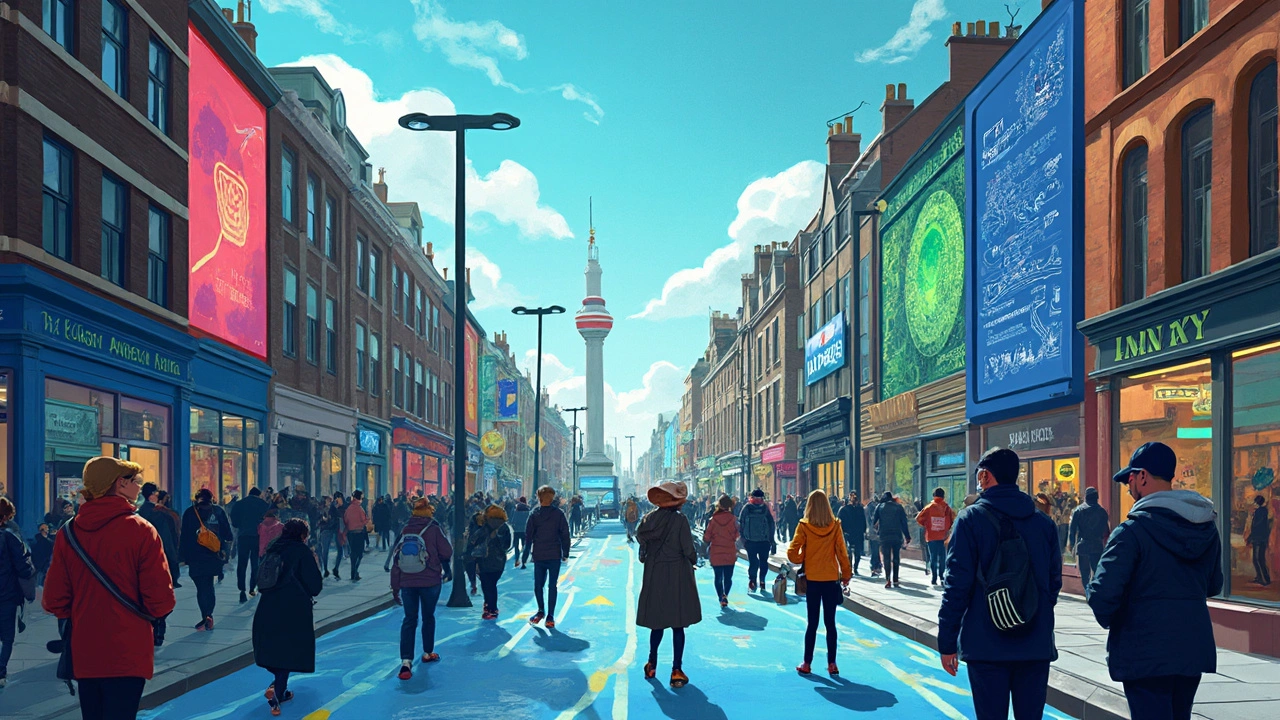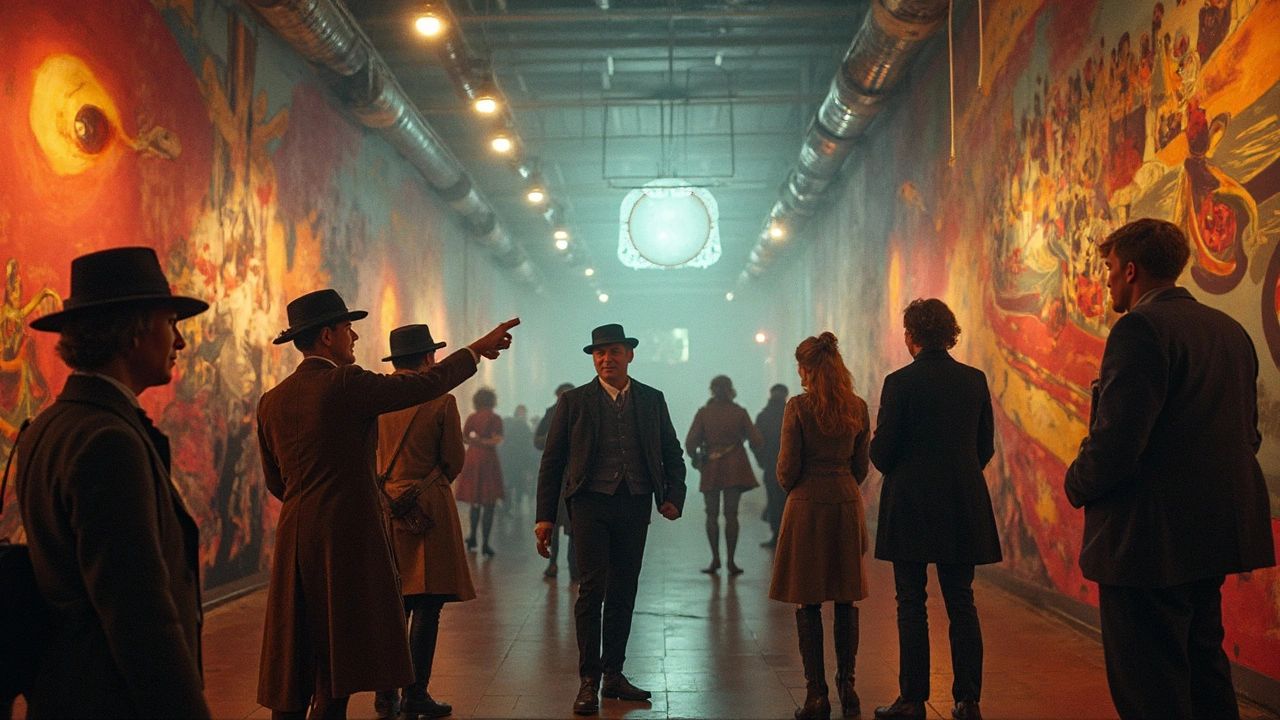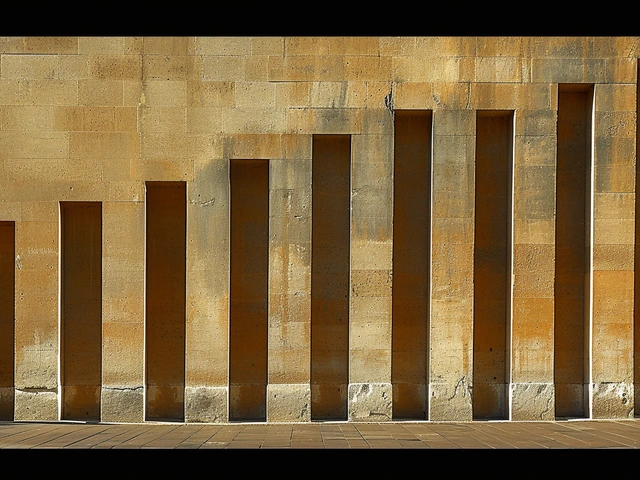Back in 1909, a wild Italian poet named Filippo Tommaso Marinetti published the Futurist Manifesto—and everyone’s idea of 'the future' changed for good. He promised speed, energy, and the thrill of everything new, basically saying, ‘Let’s ditch the past and get obsessed with what’s next.’ No wonder the newspapers went nuts.
But futurism isn’t just an old art movement. It kicked off a way of thinking people still use to design tomorrow—literally. If you see swoopy buildings, AI art, or even the flurry of hype around driverless cars, that’s futurism mutating right in front of you. Why did these ideas catch on? Because people realized we don’t have to wait for the future—it’s something we create.
Want to spot futurist thinking in your own life? Look at your phone. Every swipe, endless update, and even the design—the hunger for what’s next is built in. Futurism taught us to hunt for innovation, but also to ask: just because we can, should we?
- Radical Beginnings: The Birth of Futurism
- Breaking the Mold: Futurism in Art and Design
- Beyond Paint: Futurism and Technology
- Futurist Ideas in Pop Culture
- How to Think Like a Futurist Today
Radical Beginnings: The Birth of Futurism
The whole idea of futurism started with a bang—literally. On February 20, 1909, the French newspaper Le Figaro published the Futurist Manifesto. It was written by a guy named Filippo Tommaso Marinetti, who didn’t just want to turn heads—he wanted to turn history upside down. He basically called out tradition as boring and out of touch, saying people should embrace speed, machines, and even danger. For Marinetti, cars roaring down the street were more beautiful than the ancient statues everyone else was obsessed with.
This movement kicked off in Italy but quickly got international attention. Futurism wasn’t just about painting or poetry. It was a wild plan to shake up everything—art, design, music, even politics. The artists didn’t play it safe, either. Their shows had shouting matches, wild performances, and art that looked like nothing people had seen before. You can thank futurism for making art feel urgent and risky.
Here’s what set futurism apart when it started:
- Glorifying speed and technology. They loved cars, factories, and anything fast.
- Breaking up old styles. They dumped soft colors and smooth shapes for sharp angles and bold lines.
- Provoking strong reactions. These folks wanted to shock and get attention, not fit in.
- Mixing art forms. Futurist evenings would mix theater, music, and bursts of poetry. It was chaos on purpose.
If you’re a stats person, check this out:
| Year | Major Futurist Event |
|---|---|
| 1909 | Manifesto published (Le Figaro, Paris) |
| 1910 | Futurist painters release their own manifesto |
| 1912 | First Futurist exhibition in Paris |
The impact was instant, but futurism also drew plenty of critics. Some called it reckless and irresponsible. Still, it only added to the buzz—and pretty soon, these ideas were bouncing around Russia, England, and even America. So whenever you see tech or art that’s itching to break the rules, you’re seeing traces of those early, radical days of futurism.
Breaking the Mold: Futurism in Art and Design
The first wave of futurism hit art galleries in Italy, around 1910. Artists like Umberto Boccioni and Giacomo Balla shocked people by painting movement, not just moments. If you’ve ever seen those paintings with blurs and repeated lines—almost like a flipbook effect—that’s classic futurist style. They wanted their art to move, to buzz, and sometimes even to annoy old-school critics. Even ordinary things like bicycles and train stations were fair game for futurist artists, as long as they said ‘progress.’
But futurism didn’t stop with paintings. Designers made chairs out of metal and sharp angles. Even fashion got swept up—imagine people walking around in clothes inspired by engines and city lights. If it looked fast or felt new, they wanted it. This radical approach influenced everything from movie posters to cars, and eventually even how cities were designed. Milan’s iconic Pirelli Tower and the chrome-heavy aesthetics in old science fiction owe a lot to this movement.
Futurism also shook up typography. Ever noticed those bold, slanted headlines in ads? Thank the futurists. They loved to break up text, using unexpected shapes and random spacing to make you stop and look. It’s not just about being pretty—it’s about grabbing your brain.
Now, here’s a cool fact: in the 1920s, futurist architecture plans started popping up with ideas like glass cities and elevated roads. While some sounded wild, a bunch of those ideas are basically in today’s urban design playbook. The focus on open spaces, flow of movement, and using new materials like steel and glass—totally rooted in this era.
If you want to bring a little futurist spirit into your own design projects, try these super practical tips:
- Don’t get stuck copying the past—play with weird angles and bold shapes.
- Mix up your fonts in digital projects to grab attention, but keep it readable.
- Use metallics, bright colors, or geometric patterns—even a little goes a long way.
- Show energy or movement, not just stillness (think about blurs, trails, or dynamic poses).
Futurism, at its core, is all about breaking what’s boring. If your art or designs have a sense of rush or excitement, you’re already channeling these early rebels.

Beyond Paint: Futurism and Technology
When futurism crashed onto the scene in the early 1900s, artists weren’t just changing how they painted. They wanted to tackle the tech that was flipping the world upside down. The rise of electricity, trains, cars, and planes fired up their imaginations. Suddenly, speed and machines were everywhere—and that excitement for technology became a core part of the futurist vibe.
As the decades rolled on, futurism and technology started waltzing together in more obvious ways. In the 1920s, some futurists loved the look of metal, glass, and concrete. You can see it in early modernist architecture—sharp angles, wide-open spaces, and a fascination with the machine age. Fast-forward, and you’ll find big-name architects like Zaha Hadid and Rem Koolhaas chasing that same energy, creating buildings that look like they came straight out of a sci-fi movie. They owe a lot to futurism's risk-taking spirit.
It’s not just about what you see, either. The futurist urge to embrace tech shows up in everything from digital art to wearable gadgets. The first robot in popular culture, named “Elektro,” was unveiled at the 1939 New York World’s Fair. And look at where we are now—AI tools generate music, create art, and even write stories. That futuristic mindset pushed creative people not to fear new tech but to play with it, shape it, and turn it into something new.
Wondering just how fast things have moved since the original futurists? Check out this short table:
| Year | Breakthrough | Impact |
|---|---|---|
| 1917 | First mass-produced cars (Ford Model T) | Changed daily life, inspired futurist motifs |
| 1939 | Robot “Elektro” debuts | Robots became part of mainstream imagination |
| 1969 | First humans walk on the Moon | Brought futurist dreams to reality |
| 2012 | 3D printing goes mainstream | Fresh creativity in art, design, and medicine |
| 2023 | Generative AI art explodes online | Everyday people make ‘futurist’ art at home |
If you want to spot futurism in today’s tech, look for anything blending bold ideas with cutting-edge tools—like kinetic sculptures, drone light shows, or even VR concerts. The trick isn’t to copy the past but to ask: How can this new tech help express the wildest ideas you can dream up?
Futurist Ideas in Pop Culture
If you think futurism is just old art, you haven’t been paying attention to pop culture. Pop culture is where futurist thinking goes wild—mixing technology, art, and a whole lot of big dreams. The way movies, TV, and even music videos show the future sticks in our heads, shaping how regular people imagine what’s coming next. Think about the first time you saw flying cars in "Blade Runner" or robots in "Westworld." Those ideas didn’t spring out of nowhere—they grabbed a bunch of old futurism vibes and cranked them up.
Hollywood loves futurist themes. For example, "Star Trek" wasn’t just a show, but basically a wish-list of future inventions: tablets, video calls, and voice assistants all popped up there first. In fact, a bunch of Silicon Valley engineers say they grew up watching it and tried to make those gadgets real. That’s how fiction leaks into reality. Or consider "The Jetsons"—that cartoon predicted flatscreens, smartwatches, and even robot vacuums decades before we had them.
Let’s not forget fashion and music. Daft Punk and Grimes both use space-age looks and digital sounds that throw back to old-school futurist art, but with a high-tech twist. Designers like Pierre Cardin took cues from rocket ships for his 1960s clothes, and to this day, you can see the same thing on runways. Even TikTok filters and avatars are, in their own way, futuristic self-portraits.
- Comics and graphic novels: "Akira" and "Transmetropolitan" show cyberpunk cities dripping with futurism.
- Video games: "Cyberpunk 2077" and "Deus Ex" let you walk through worlds inspired by the same movement.
- Music videos: From Michael Jackson’s "Scream" to Janelle Monáe’s Metropolis saga, futurist visuals are everywhere.
There’s even a study from 2022 that showed over 60% of people under 35 said their ideas about technology came from movies before they showed up in the real world. Pop culture isn’t just fun—it’s a test lab where futurism experiments with what might come next.

How to Think Like a Futurist Today
If you want to start thinking like a true futurism fan, it’s not just about loving shiny tech. It’s a way of questioning everything around you—are things as good as they could be, or is there a better, smarter way forward? Real futurists mix curiosity, skepticism, and wild imagination every day. Here’s how you can get into that mindset.
- Spot Patterns: Every big change starts small. Futurists track patterns in tech, culture, and art. For example, practically everyone streaming instead of watching cable a few years ago? A sign of bigger shifts. Train your brain to notice these signals before they’re obvious to everyone else.
- Imagine "What if?": Don’t just accept how things are. Ask yourself: what would happen if commuting was totally optional, or if all news was made by AI? Thinking big—and sometimes a bit weird—opens new directions.
- Question Everything: Don’t trust ideas just because they’re trendy. A classic futurism move is to poke holes in hype and watch for hidden consequences. Crypto coins seemed cool—until you checked how much energy Bitcoin gobbles up.
- Mix Old and New: The smartest inventions often come from combining things that don’t usually go together. Self-driving cars use classic traffic rules with cutting-edge tech. What unusual mashups can you spot or dream up?
- Dare to Share: Don’t keep your ideas locked away. Futurists talk, share, and sometimes spark whole movements (like those early futurists publishing wild manifestos). Start a simple blog, a Discord group, or join a local tech meet-up—there are always others who want to push ahead too!
Studies show that companies who actively practice this kind of forward-thinking (think Google and Tesla) are more likely to launch breakthrough products. Check out this quick comparison in recent years:
| Company | Years Active in Futurist Thinking | Major Innovations Launched |
|---|---|---|
| 20+ | AI Search, Self-driving Cars, Quantum Computing | |
| Tesla | 15+ | Electric Cars, Consumer Battery Tech, SpaceX Crossover Projects |
| Apple | 25+ | iPhone, Wearables, Biometric Security |
Getting into a futurism mindset doesn’t mean predicting the future perfectly. It’s about being open to what’s possible and having the guts to experiment—even if it sounds crazy at first. That’s the real secret behind every leap forward.




